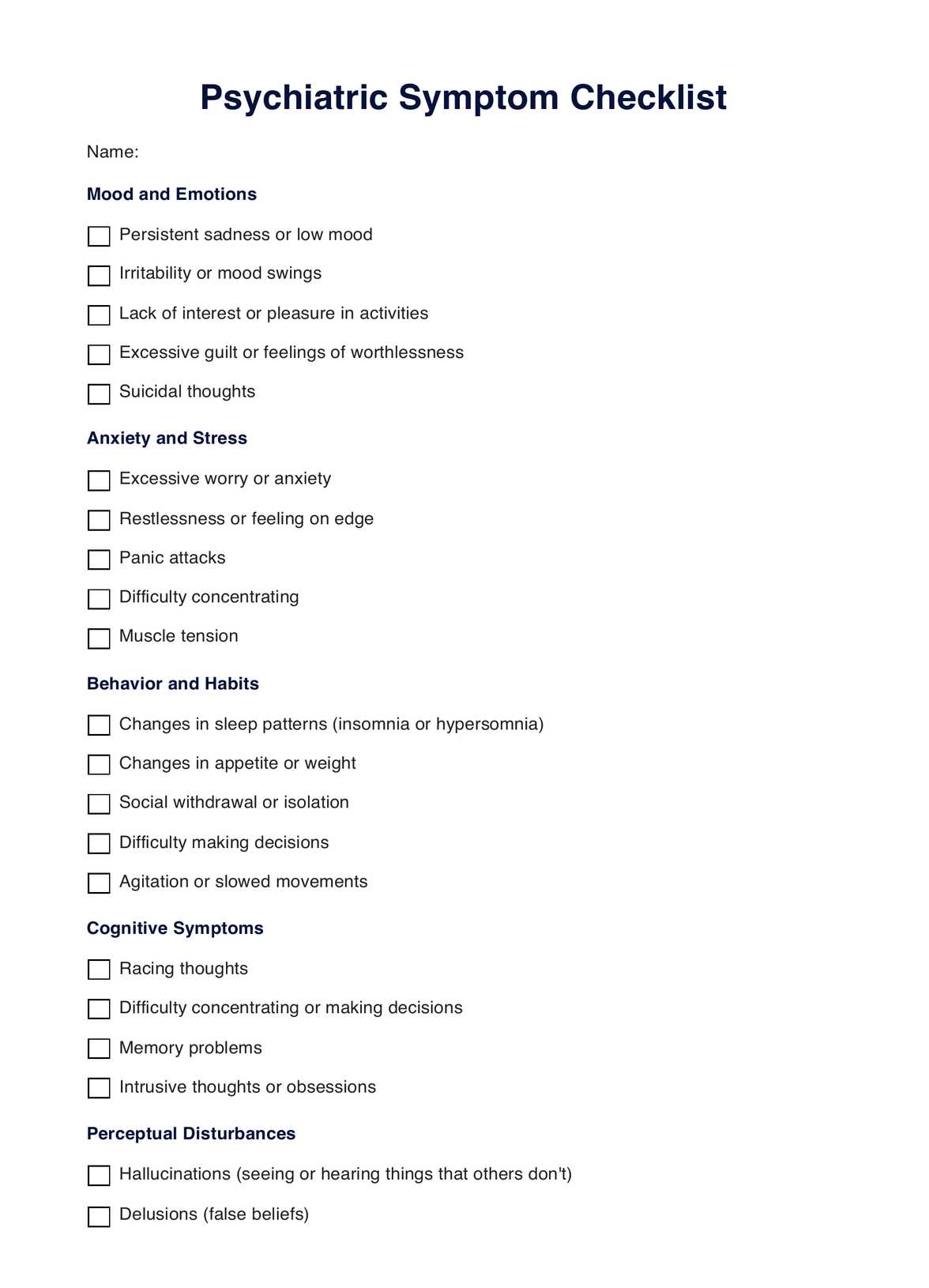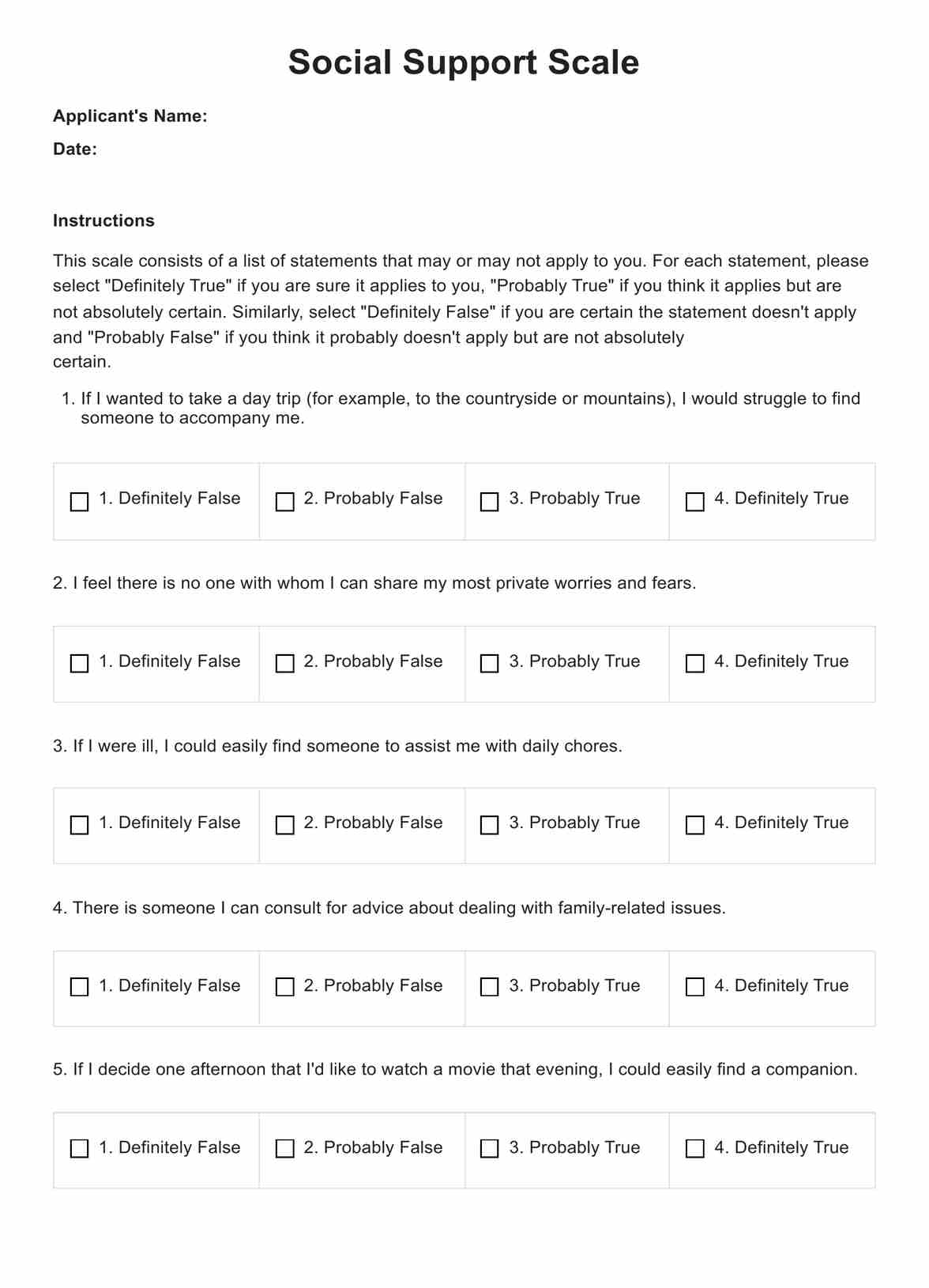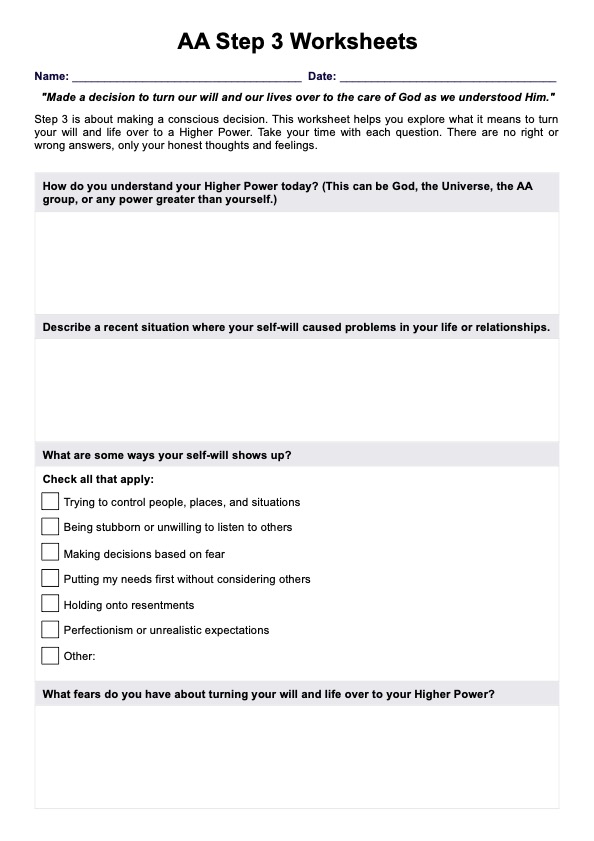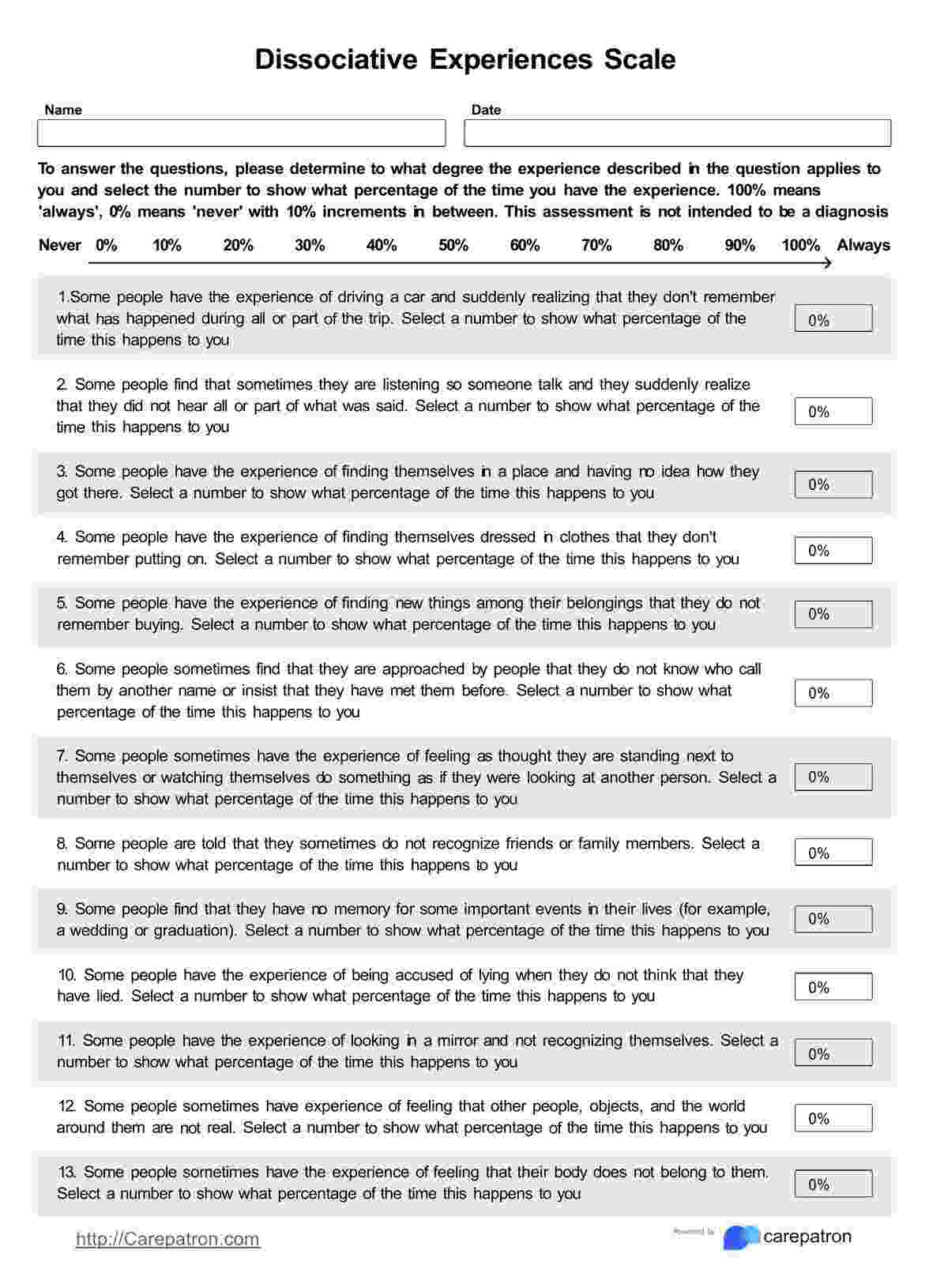Boundaries Worksheets For Youth
Use our boundaries worksheet for youth to help your patients set achievable goals in their personal lives. Foster a collaborative relationship and improve communication and outcomes with this tool.


What is a Boundaries Worksheet?
A Healthy Boundaries Worksheet is a valuable tool for healthcare experts and individuals alike, offering a structured approach to understanding and implementing healthy boundaries in various aspects of life. In the realm of mental and emotional well-being, establishing and maintaining healthy boundaries is crucial for fostering positive relationships and maintaining overall health.
At its core, a Boundaries Worksheet serves as a guided exercise to help individuals identify, set, and maintain healthy boundaries. It goes beyond the conventional understanding of personal space and delves into the intricacies of emotional and interpersonal limits. By engaging in this process, healthcare professionals can empower their clients to navigate the delicate balance between self-care and building meaningful connections.
Setting healthy boundaries involves acknowledging one's limits and communicating them effectively. The worksheet prompts individuals to reflect on their needs, desires, and emotional capacity, paving the way for a more profound understanding of personal boundaries. This self-discovery is essential in cultivating a strong sense of self and forming healthier relationships.
The worksheet typically covers various aspects of life, from professional to personal domains, helping healthcare experts guide their clients in tailoring boundaries to specific contexts. The worksheet becomes a roadmap for individuals to navigate the sometimes complex terrain of interpersonal dynamics by breaking down the concept of healthy boundaries into manageable sections.
Moreover, a Boundaries Worksheet encourages individuals to recognize and assert their emotional boundaries. This involves understanding and expressing one's emotions while respecting the emotions of others. By doing so, individuals can foster a supportive environment that promotes emotional well-being and enhances the overall quality of relationships.
In the hands of healthcare experts, the Boundaries Worksheet becomes a versatile tool for psychoeducation and therapeutic interventions. Its engaging format and structured approach make it an effective instrument for facilitating discussions around setting boundaries, thus contributing to the holistic well-being of individuals.
Boundaries Worksheets For Youth Template
Boundaries Worksheets For Youth Example
How to use this Boundaries Worksheet
The Boundaries Worksheet is a dynamic tool designed to guide individuals through the process of self-reflection, identification, and establishment of healthy boundaries in their relationships. This user-friendly template, structured into several sections, empowers users to explore their values, past experiences, and strategies for setting and maintaining boundaries. Here are the steps for using the Boundaries worksheet:
1. Client information
Begin by filling out basic client information such as name, date of birth, and contact details. This sets the groundwork for a personalized exploration of boundaries.
2. Personal reflections
Engage in thoughtful reflection on the meaning of boundaries and delve into personal values and beliefs associated with this concept. Reflecting on past experiences provides a foundation for understanding what has worked well and what hasn't in boundary-setting.
3. Identifying boundaries
Recognize and list areas in life where establishing boundaries is crucial. This could include personal space, time management, communication, and emotional intimacy. Identify specific instances where boundary-setting has been challenging and be attuned to relationship warning signs.
4. Setting boundaries:
Explore strategies for setting and maintaining healthy boundaries in relationships. This section emphasizes the importance of effective communication in articulating boundaries, responding to boundary violations, and incorporating self-care practices for overall well-being.
5. Reflections and next steps:
Reflect on the insights gained from completing the worksheet. Identify one or two specific boundaries to set in relationships and outline concrete steps to establish and maintain these boundaries. The worksheet encourages users to monitor progress and evaluate the effectiveness of their strategies over time.
The Boundaries Worksheet is a self-guided journey toward enhanced understanding and implementation of healthy boundaries. By prompting users to reflect on personal experiences, values, and challenges, the worksheet contributes to promoting mental health and cultivating healthier relationships.
Who can use these printable Boundaries Worksheets (PDF)?
Printable Boundaries Worksheets (PDF) are versatile resources suitable for various scenarios, empowering young individuals to cultivate healthy relationships and navigate the complexities of personal boundaries. Here's a breakdown of when it's most appropriate to use this invaluable resource:
Educational settings
Schools and educational institutions can incorporate these worksheets into their curriculum to teach students about healthy boundaries. Youth counselors and educators can use the worksheets during workshops or one-on-one sessions to address interpersonal dynamics.
Therapeutic interventions
Clinical psychologists specializing in youth therapy can utilize these worksheets to foster healthier emotional development. Whether individual or group, youth-focused therapy sessions can benefit from structured exercises on setting and respecting boundaries.
Couples counseling
Specifically designed for young couples, these worksheets are ideal for couples counseling sessions, offering practical tools to enhance communication and establish healthy boundaries. Couples can use the worksheets collaboratively to strengthen their relationship, learn about each other's limits, and foster mutual understanding.
Friendship dynamics
Youth in close friendships can employ these worksheets to navigate the complexities of personal boundaries, promoting mutual respect and understanding. Youth groups or organizations that foster positive peer relationships can integrate these resources into their activities.
New relationship exploration
Young individuals entering new romantic relationships can use the worksheets as a guide for open and honest communication about personal needs and boundaries. These worksheets can facilitate discussions that help establish a strong foundation for healthy relationships.
Personal use
Regardless of age, individuals can use the worksheets independently for personal growth and self-reflection. The worksheets empower youth to identify their needs, set boundaries confidently, and develop strategies to communicate these boundaries effectively.
Public spaces
Youth engaged in community or social activities can benefit from these resources to navigate boundaries in public spaces and group settings. The worksheets provide practical scenarios to help youth discern appropriate boundaries in diverse social contexts.
Addressing unhealthy relationships
Youth in unhealthy relationships can use the worksheets to recognize and address boundary violations. These resources guide setting boundaries and, if necessary, seeking support or legal action in extreme cases.
Why is this form useful for therapists?
Therapists find the Boundaries Worksheet indispensable in their clinical toolkit due to its multifaceted utility, fostering therapeutic progress and client well-being. Here are several reasons why this form is particularly useful for therapists:
Identification of limits
The worksheet aids therapists in guiding clients through the process of identifying their personal, emotional, and physical limits. This is crucial for self-awareness and the establishment of healthy boundaries.
Boundary setting statements
Therapists can use the worksheet to help clients craft clear, assertive boundary-setting statements. This skill is vital for effective communication, especially in challenging situations.
Application to close relationships
Therapists can tailor the worksheet to address boundary-related issues in close relationships. Whether within families, romantic partnerships, or friendships, the worksheet helps navigate and strengthen these connections.
Teaching boundary values
The worksheet serves as an educational tool, allowing therapists to teach and reinforce the importance of personal values in establishing boundaries. This is essential for aligning individual limits with core beliefs.
Adaptability for different age groups
Therapists working with children, teens, or adults can adapt the worksheet to suit the developmental needs of their clients. For instance, therapists may use simpler language and concrete examples for middle-school-aged clients.
Handling difficult situations
Therapists can leverage the worksheet to guide clients in navigating difficult situations. By working through specific scenarios, clients develop problem-solving skills and enhance their ability to set appropriate boundaries in real-life contexts.
Supporting clinical psychologists
Clinical psychologists specializing in boundary-related issues can use the worksheet as a supplementary resource. It provides a structured approach to address boundary challenges within the therapeutic setting.
Examples for practical application
The worksheet offers concrete examples of boundary-setting in various contexts. Therapists can use these examples to illustrate healthy boundaries, making abstract concepts more tangible for clients.
Preventing boundary violations
Therapists can utilize the worksheet proactively to discuss and reinforce the prevention of boundary violations. This promotes a proactive approach to maintaining healthy professional-client relationships.
Empowering teens
Therapists working with adolescents can use the worksheet to empower teens to express their boundaries. This is particularly crucial during a developmental moment when individuals shape their identities and social interactions.
Importance in family therapy
Family therapists find the worksheet invaluable in family sessions. It is a collaborative tool that fosters open communication among family members and addresses boundary-related issues within the family dynamic.
Benefits of Boundaries Worksheet template
The Boundaries Worksheet Template is a powerful tool that extends many benefits, particularly in the realm of mental health and personal development. Clinical psychologists and individuals find immense value in its structured approach to understanding, setting, and maintaining boundaries. Here are five key benefits of using the Boundaries Worksheet Template:
1. Self-awareness and identification of personal needs
The worksheet prompts individuals to reflect on their needs, desires, and emotions. This process of introspection is essential for cultivating self-awareness. By recognizing and acknowledging their needs, individuals gain insights into what contributes to their well-being and fulfillment.
2. Empowerment to set and communicate boundaries:
One of the primary benefits of the worksheet is its role in empowering individuals to set and communicate boundaries effectively. Through guided exercises, individuals learn to articulate and express their limits confidently. This newfound ability is particularly valuable in personal and professional contexts where clear communication is crucial.
3. Mitigation of the inner critic:
The worksheet provides a structured framework for individuals to assess and challenge their inner critic, that nagging voice that often undermines confidence and self-worth. Individuals can identify and counter negative self-talk by actively engaging with the worksheet, fostering a more positive and empowering self-perception.
4. Creation of healthy boundaries:
The worksheet guides users in distinguishing between healthy and unhealthy boundaries. This crucial differentiation is instrumental in creating a roadmap for cultivating relationships that contribute positively to one's life. Understanding the distinction helps individuals foster connections that respect personal limits and contribute to overall well-being.
5. Enhanced professional boundaries:
For individuals in professional settings, maintaining appropriate boundaries is vital for a healthy work environment. The worksheet equips professionals, including clinical psychologists, with tools to balance empathy and maintaining professional distance. It assists in preventing burnout and maintaining the integrity of the therapeutic relationship.
6. Correction of poor boundaries:
Individuals who may have developed poor boundaries, perhaps due to past experiences or societal expectations, can use the worksheet to identify and correct these patterns. By addressing poor boundaries, individuals can transform their relationships and interactions, fostering healthier dynamics.
The Boundaries Worksheet Template catalyzes positive personal development and improved relationships. Its benefits extend to fostering self-awareness, empowering individuals to set boundaries, mitigating negative self-talk, creating healthy relationships, enhancing professional boundaries, and correcting patterns of poor boundaries. As a versatile tool, it provides a structured and accessible way for individuals, guided by clinical psychologists or working independently, to embark on a journey of self-discovery and improved interpersonal dynamics.
Commonly asked questions
A Boundaries Worksheet is a structured tool designed to help individuals identify, set, and maintain healthy boundaries in various aspects of their lives. It often includes prompts, exercises, and scenarios to guide users in understanding and establishing personal and professional boundaries in relationships.
Boundaries Worksheets are beneficial as they promote self-awareness, empower individuals to communicate their needs effectively, and foster healthier relationships. These tools provide a framework for navigating interpersonal dynamics and recognizing the importance of personal limits.
Boundaries Worksheets are versatile and can be used by individuals of all ages, including teens and adults. They are employed in educational settings, therapy sessions, and personal development contexts to enhance emotional intelligence and communication skills.


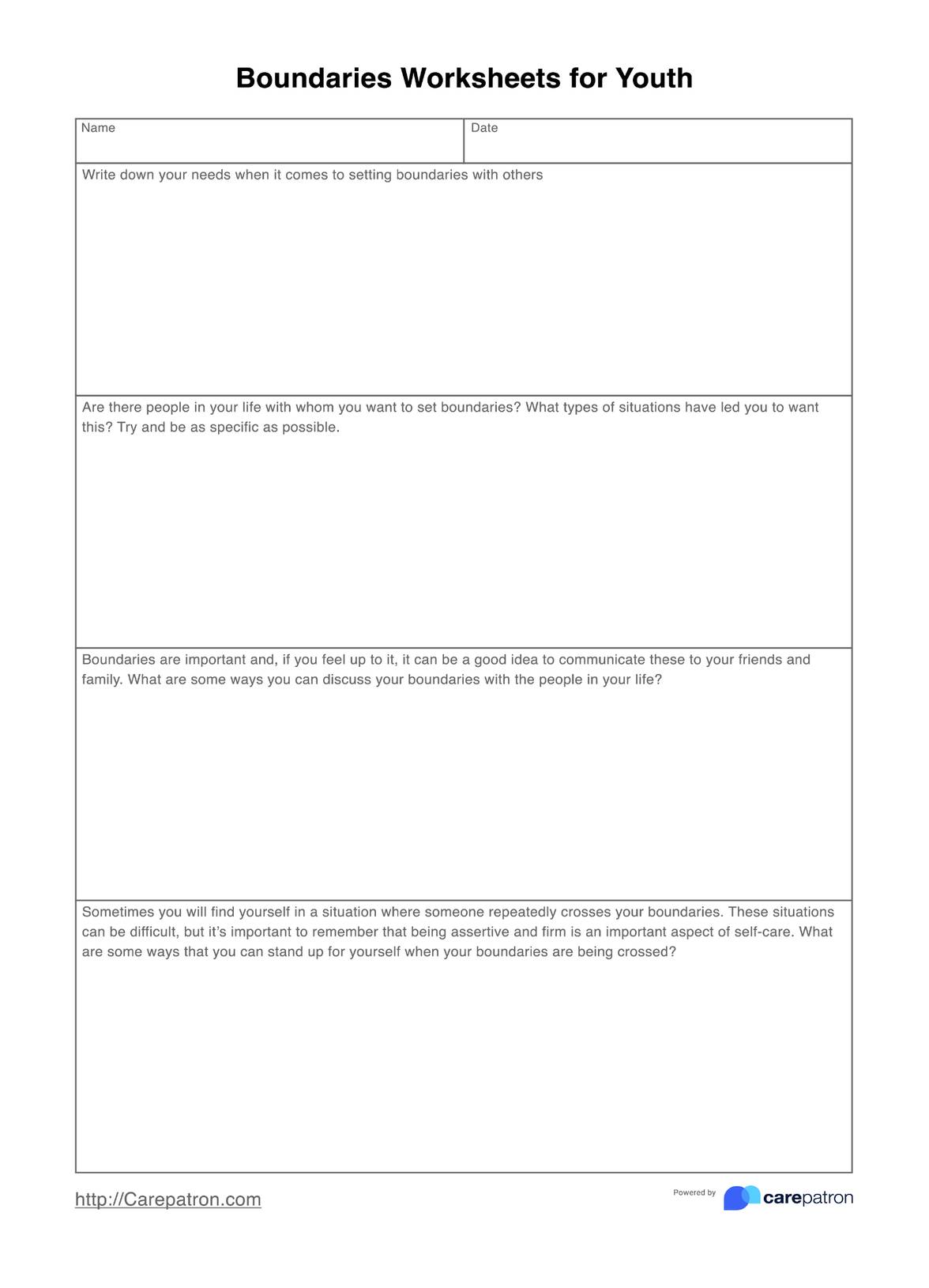
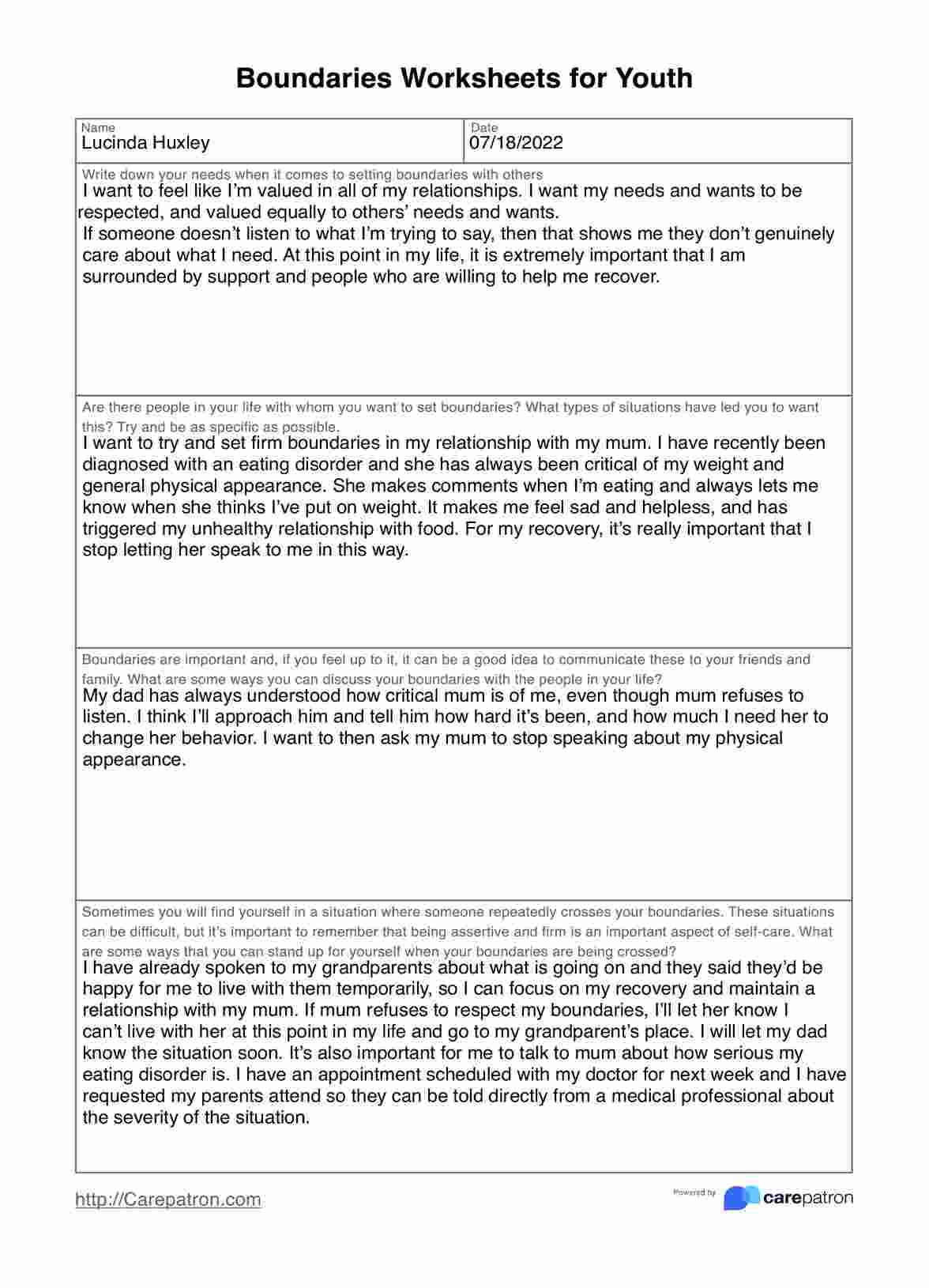














-template.jpg)




























































































